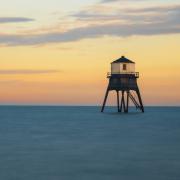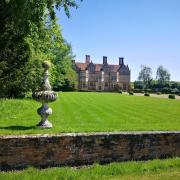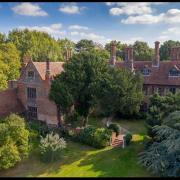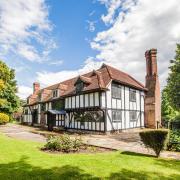The courageous men of Essex climbed ‘over the top’ to be greeted by murderous machine gun and artillery fire. It was 10:50 am on 1st July 1916, the first day of the notorious Battle of the Somme in North-East France and the 1st Battalion of the Essex Regiment was going in.
The Thiepval Memorial remembers those who perished on the Somme and have no known grave, and lists 959 gallant men of the Essex Regiment. The Essex Yeomanry’s 1st Line Regiment meanwhile had already experienced its baptism of fire during 2nd Ypres, when the Battle of Frezenberg Ridge (13th May 1915) saw it take more than 160 casualties (killed, wounded and missing) out of just over 300 who’d gone into action. After the horrors of the trenches, WW1 was idealistically dubbed ‘The War to End War’ or ‘The War to End All Wars’ for we could not possibly see its like again, yet within a generation there was another, even more catastrophic, world war to fight.

25 years on from the Somme
‘I’m all right’: Hopeful yet tragically misguided words from a ten-year-old girl hauled from wrecked buildings in Romford. They were the last words she would ever speak. WW2 was the most destructive war in human history, lasting for six years and costing a conservative estimate of 60 million lives, the majority non-combatants. As we mark another Remembrance, it’s time to reflect on both WW1 and WW2, two global conflicts that ended and began within 21 years and left scars on the county of Essex that haven’t yet healed.

You begin to understand the carnage of WW1 when you realise there’s just one ‘Thankful Village’ in Essex. This was the single lucky community losing no servicemen, when all others did. Strethall, in Essex’s north-west, had all its men return. Every other community in the county, from city and town, to modest village and humble hamlet, lost its quota. The Essex Regiment raised all of 30 battalions during WW1, was awarded 62 battle honours and one Victoria Cross, but lost 8,860 men. If any WW1 battle sums up war’s futility, then it’s the Somme, and especially its first day, on which some 20,000 British soldiers lost their lives (roughly the same number as the ground record crowd assembling at Colchester United FC’s old Layer Road in November 1948 for an FA Cup tie). The 1st Battalion went over the top on that first day, targeting the German defences’ strongest point, and suffering horrendous losses as the assault faltered because of heavy artillery and machine gun fire. The 2nd Battalion also featured in a later phase of the battle, again losing significant numbers.

This was the first ‘total war’ with a whole nation mobilised. If you weren’t serving in the armed forces, you might be working in a munitions factory, or on the land, producing the food to thwart Germany’s use of unrestricted submarine warfare, which attempted to starve Britain into submission. Kynoch Ltd. at Corringham employed over 4,000, mainly women, in a huge explosives factory, whist Crittall in Braintree, usually churning out windows, converted to munitions. Military hospitals were established, for example, Saffron Walden’s Voluntary Aid Detachment (VAD) Hospital, where over 1,000 soldiers were tended, including those wounded on the front line. Southend’s Palace Hotel became a hospital, treating over 4,000 servicemen, whilst anti-German riots in the same town came in the wake of a Zeppelin attack in May 1915. By 1916 enforced conscription took men off farms. That, plus the difficulty of guaranteeing food imports in the face of unrestricted submarine warfare, saw shortages. Sugar was the first rationed commodity.


Called to Action
It's hardly surprising, given the two wars were fought so close together, that some Essex citizens fought in both. Archibald Wavell (1883-1950) and Gerald Templer (1898-1979) were both Colchester-born Army officers who achieved this unwanted notoriety. Not everyone wanted a second helping. Chelmsford-born Ronald Skirth (1897-1977) fought during WW1, including at Passchendaele, an experience that affected him so profoundly he took to pacificism. His memoir, ‘The Reluctant Tommy’, was aptly titled.
During WW2 the men of the Essex Regiment and Yeomanry served abroad, but Essex folk did their bit on the Home Front. No-one was spared in this second ‘total war’. The Essex Regiment’s 1st Battalion served in North Africa and in the Far East. The 2nd Battalion had moved to France in 1939 so took part in the Dunkirk evacuation (May/June 1940). It headed t’other way in June ’44, landing on D-Day, and fighting on until Germany’s capitulation in May ’45. Further battalions were raised which also served in North-West Europe after D-Day. There were also Territorial battalions serving overseas. Lt. Col. Augustus Charles Newman (1904-72) was a Chigwell-born member of the Essex Regiment and recipient of the Victoria Cross, gaining the award during the attack on St Nazaire in March 1942. The Essex Yeomanry also did its bit. The 104th Regiment served in North Africa, whilst the 147th landed on D-Day.


Essex was in the front line again. Chelmsford, a light engineering centre, including famed Marconi, was heavily bombed. Chelmsford-born Florence Attridge (1901-75) worked at the Marconi wireless factory and received the BEM (British Empire Medal) for her war work; it’s believed she was making secret radio sets for the Resistance. A raid of 13th May 1943 left more than 50 dead and almost 1,000 homeless, whilst a V-2 narrowly missed the Marconi factory and Hoffmans ball-bearing factory on 19th December ’44, but still killed 39, with nearly 150 injured. There’s a monument in the cemetery in Writtle Street. This was one of over 300 V-2 rockets falling on the county between September ’44 and March ‘45. Chelmsford was hit three times, whilst Chingford suffered the most V-2 hits in the county (12). The GHQ Line, part of the British Hardened Defences, was intended to hold and throw back the expected German invasion. It ran straight through Chelmsford where many pillboxes still exist. Had the invasion occurred, we should assume Essex’s county town would have seen bitter fighting. The coast was also defended, for example, at Burnham on Crouch, where more pillboxes can be seen.


Widespread destruction
Colchester, a garrison town and base for infantry and light-anti-aircraft training, plus home to the Paxman factory that turned out engines for subs and landing craft, was also targeted. The Germans tried to obliterate the town’s industries, but indiscriminately hit another target instead. On 11th August 1942 bombs shattered a psychiatric hospital, killing 38. In February ’44, more bombing led to a huge fire in the St Botolph’s area, which affected part of Paxman’s Britannia Works. More than 1,000 bombs fell on Brentwood, which accounted for over 5,000 houses and left more than 40 dead and almost 400 injured. The proximity of Warley Barracks, the Essex Regiment depot, may have influenced Brentwood’s targeting. Ironically, Brentwood was deemed a safe haven at the start of the war so children from London were evacuated there, with around 6,000 arriving in September 1939 alone.
Saturday 19th April 1941 was the worst night for the citizens of Romford and Hornchurch. Essex Road, Romford was smashed by a parachute mine, which killed 38, mostly women and children. Ten-year-old Vera Carter was extricated from the rubble on the Monday afternoon, reassuring her saviours that ‘I’m all right’, only to lose consciousness soon after and forfeit her young life the same day in Oldchurch Hospital. Nearby Hillfoot Avenue was hit with another six dying. A direct hit on an air-raid shelter on the Hornchurch border (Brentwood Road) saw nine members of one family killed, seven children, aged eleven to just under two years, and their parents who were powerless to protect them. The area was unfortunate to be on the Luftwaffe’s London flightpath but also had RAF Hornchurch, which would have been a prime target. Essex airfields played their part in the fightback though. RAF Fighter Command included North Weald and the one at Hornchurch, both of which featured in the Battle of Britain, whilst RAF Bradwell Bay joined them later in the war when the menace had become V-1 flying bombs. RAF North Weald was home to Group Captain Douglas Bader after his release from Colditz in April ’45, as he briefly commanded the North Weald Sector of Fighter Command.

Essex was badly hit and its losses had been appalling, but it played its part in gaining the final victory, be that the county’s regiments serving overseas, Fighter Command’s airfields, or the Home Front, from the Bomb Girls of the munitions and ordnance factories, including Waltham Abbey Royal Gunpowder Mills, to Land Girls on the farms. Victory secured the freedom to continue living our lives the way we wish to. Let’s continue to use that freedom wisely and respectfully. It truly was hard won. Remembrance will be observed this year on Saturday 11 November (Remembrance Day or Armistice Day) and Sunday 12 November (Remembrance Sunday). We still remember the fallen of two world wars but also those who’ve served our nation more recently.



























